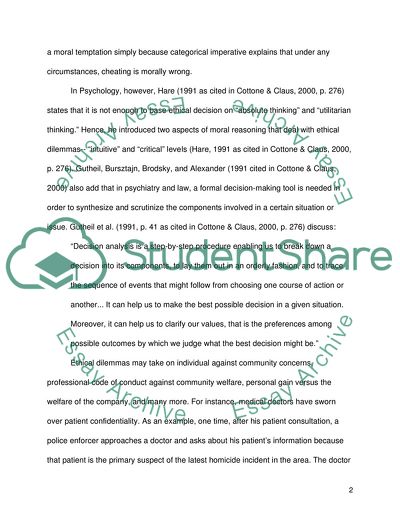Cite this document
(Ethical Dilemmas Concerning Right-Versus-Right Scenario Coursework Example | Topics and Well Written Essays - 2500 words, n.d.)
Ethical Dilemmas Concerning Right-Versus-Right Scenario Coursework Example | Topics and Well Written Essays - 2500 words. https://studentshare.org/ethics/1794971-ethical-dilemmas
Ethical Dilemmas Concerning Right-Versus-Right Scenario Coursework Example | Topics and Well Written Essays - 2500 words. https://studentshare.org/ethics/1794971-ethical-dilemmas
(Ethical Dilemmas Concerning Right-Versus-Right Scenario Coursework Example | Topics and Well Written Essays - 2500 Words)
Ethical Dilemmas Concerning Right-Versus-Right Scenario Coursework Example | Topics and Well Written Essays - 2500 Words. https://studentshare.org/ethics/1794971-ethical-dilemmas.
Ethical Dilemmas Concerning Right-Versus-Right Scenario Coursework Example | Topics and Well Written Essays - 2500 Words. https://studentshare.org/ethics/1794971-ethical-dilemmas.
“Ethical Dilemmas Concerning Right-Versus-Right Scenario Coursework Example | Topics and Well Written Essays - 2500 Words”. https://studentshare.org/ethics/1794971-ethical-dilemmas.


